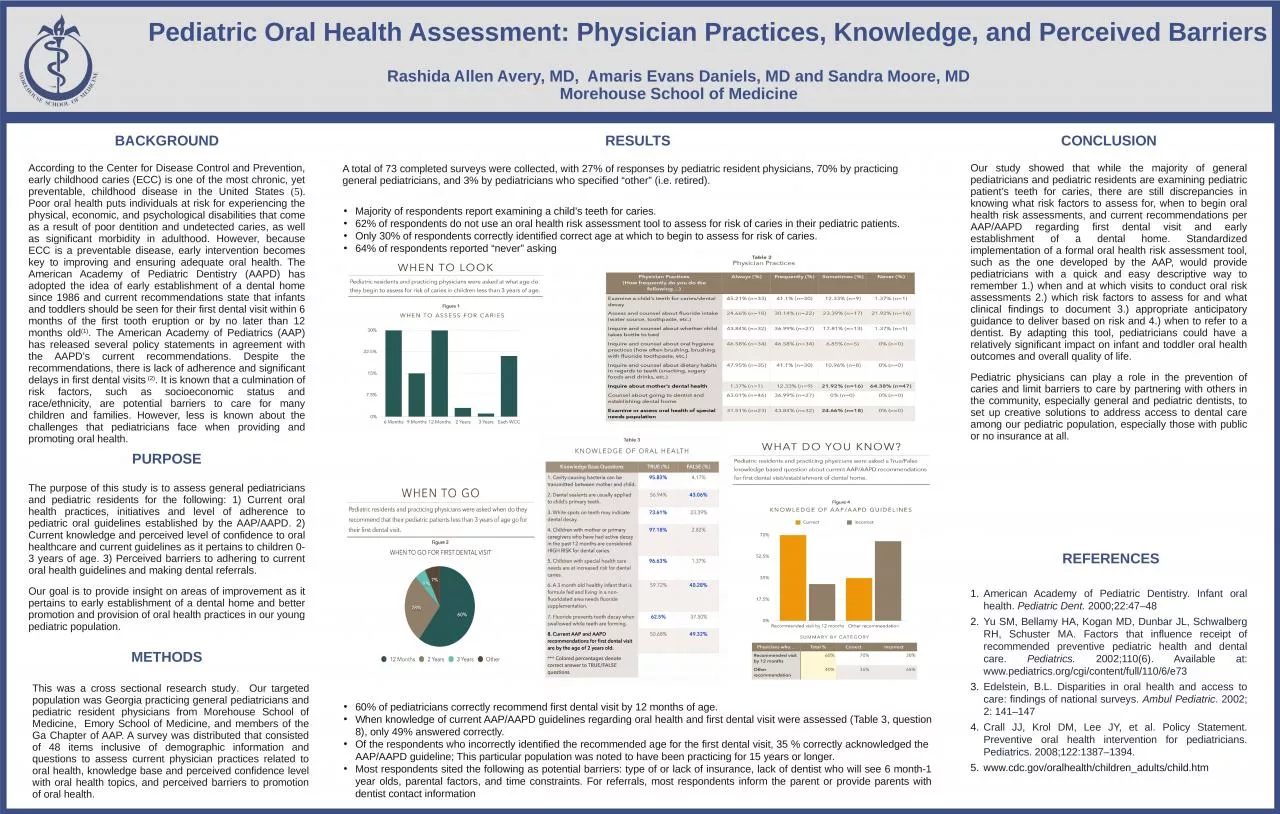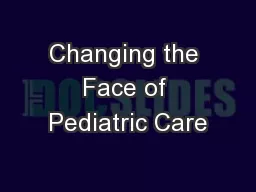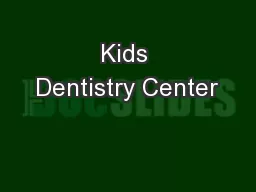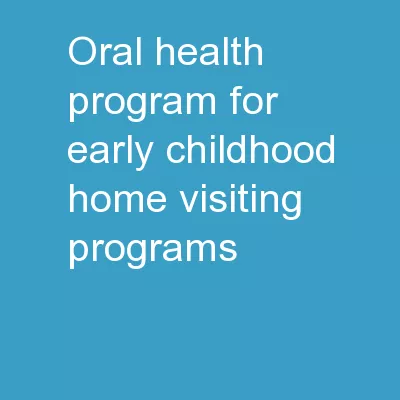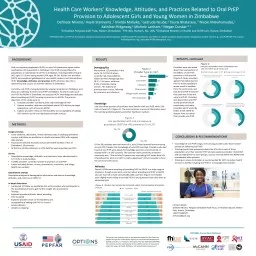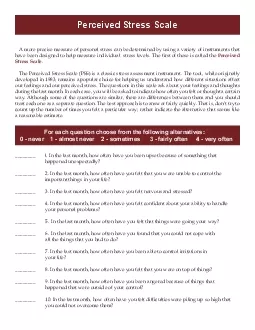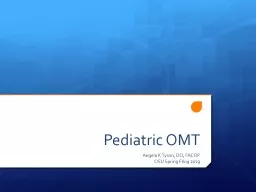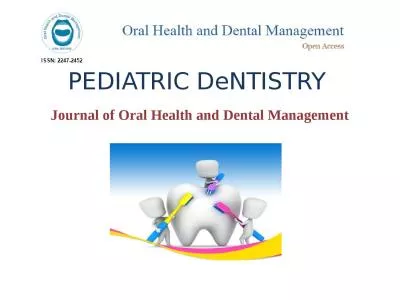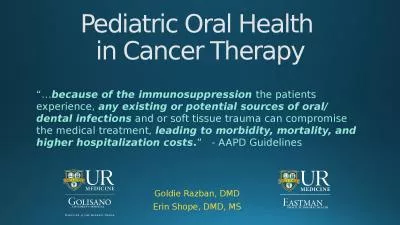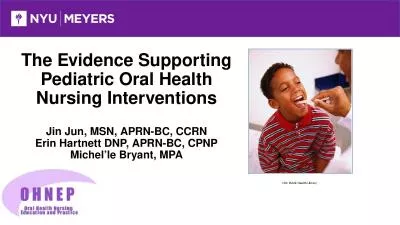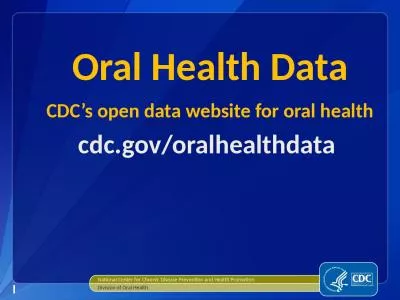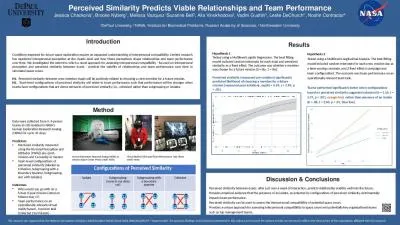PPT-Pediatric Oral Health Assessment: Physician Practices, Knowledge, and Perceived Barriers
Author : dandy | Published Date : 2023-11-23
Rashida Allen Avery MD Amaris Evans Daniels MD and Sandra Moore MD Morehouse School of Medicine BACKGROUND RESULTS CONCLUSION PURPOSE The purpose of this study
Presentation Embed Code
Download Presentation
Download Presentation The PPT/PDF document "Pediatric Oral Health Assessment: Physic..." is the property of its rightful owner. Permission is granted to download and print the materials on this website for personal, non-commercial use only, and to display it on your personal computer provided you do not modify the materials and that you retain all copyright notices contained in the materials. By downloading content from our website, you accept the terms of this agreement.
Pediatric Oral Health Assessment: Physician Practices, Knowledge, and Perceived Barriers: Transcript
Download Rules Of Document
"Pediatric Oral Health Assessment: Physician Practices, Knowledge, and Perceived Barriers"The content belongs to its owner. You may download and print it for personal use, without modification, and keep all copyright notices. By downloading, you agree to these terms.
Related Documents

